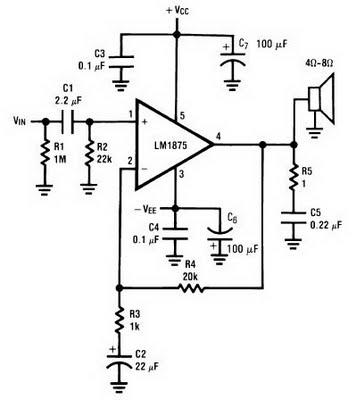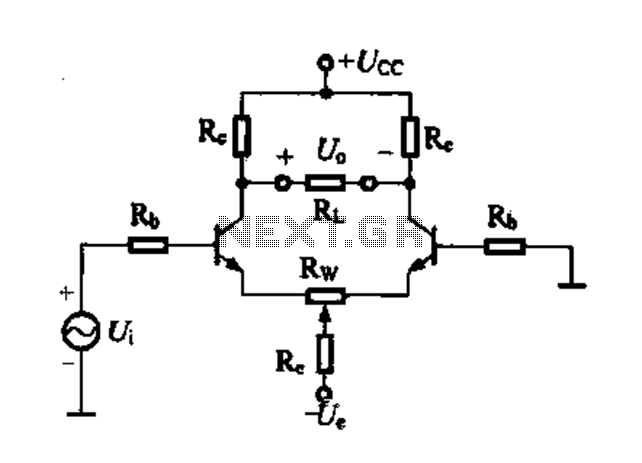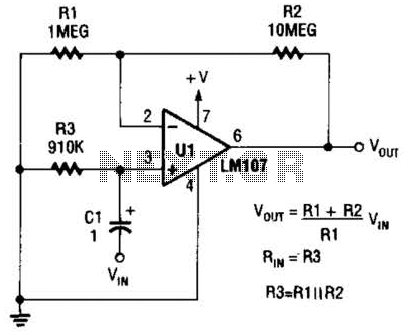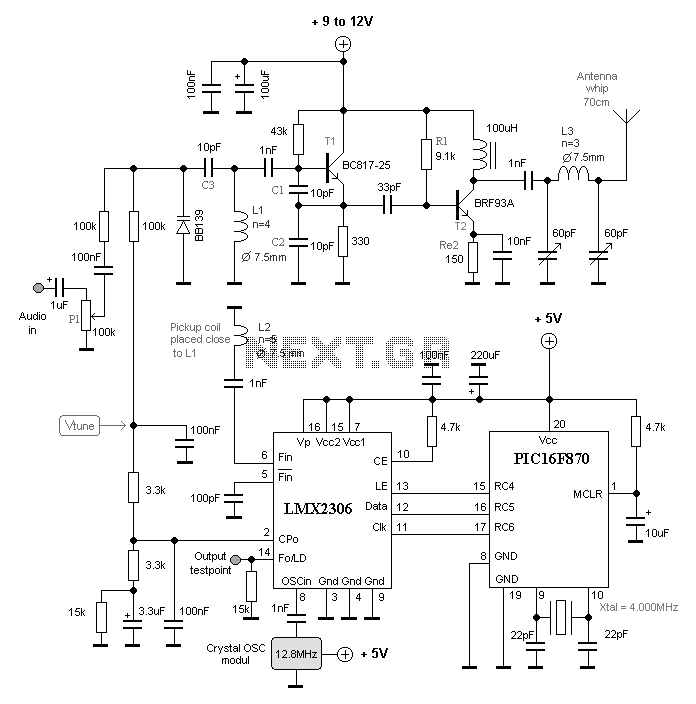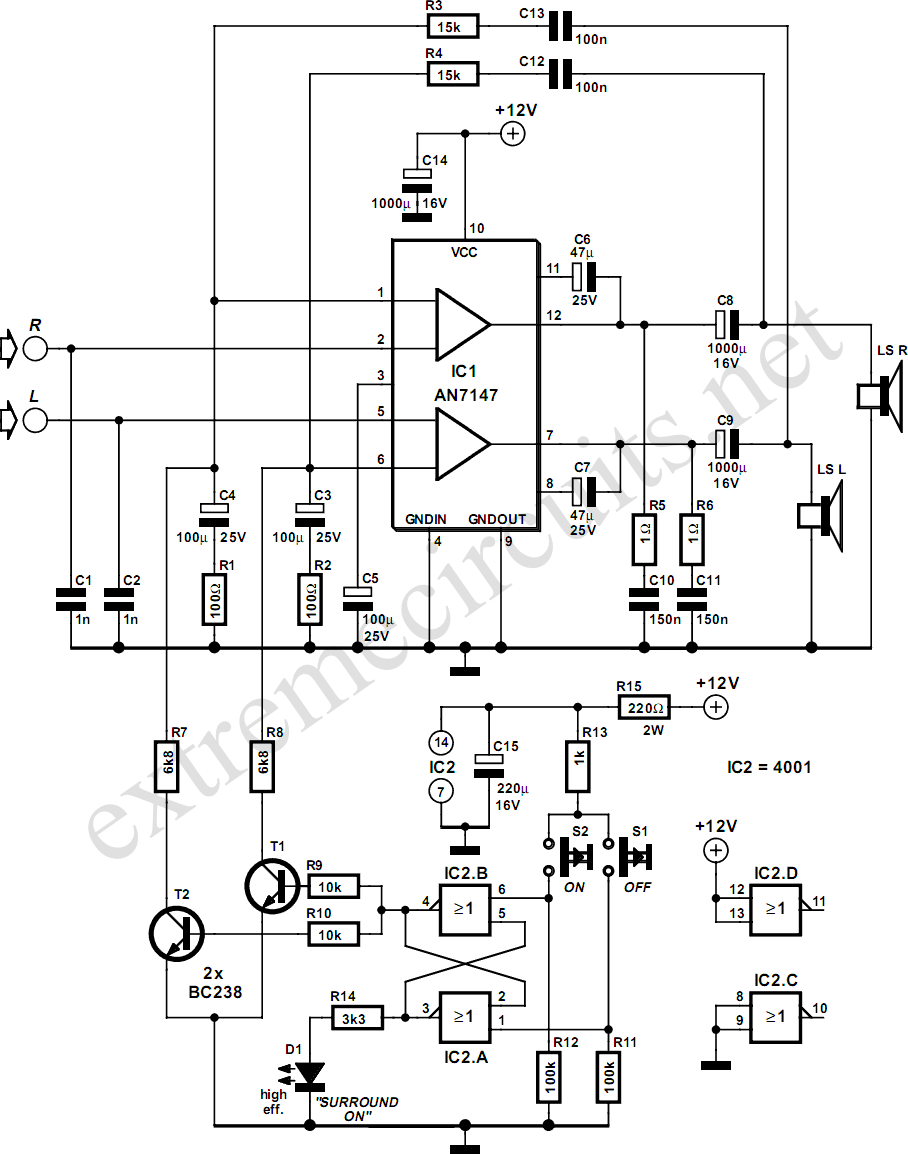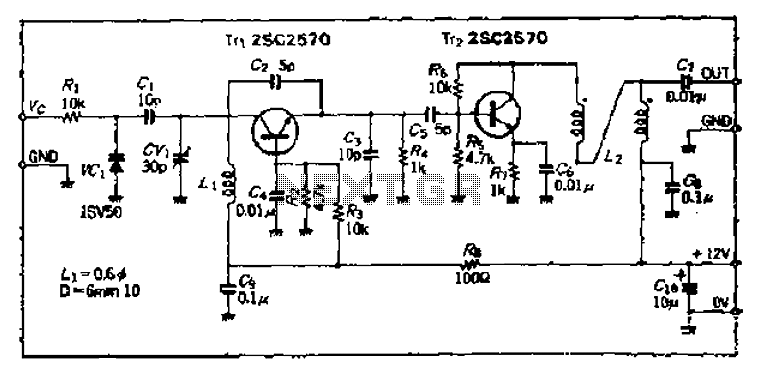
10.7 MHz RF Amplifier And Filter

The following circuit illustrates a 10.7 MHz RF amplifier and filter circuit diagram. Features include significant capacitances of a power MOSFET.
The 10.7 MHz RF amplifier and filter circuit is designed to amplify radio frequency signals while simultaneously filtering out unwanted frequencies. This circuit typically employs a power MOSFET, which is favored for its high efficiency and ability to handle high-frequency signals. The circuit can be divided into two main sections: the amplifier stage and the filter stage.
In the amplifier stage, the MOSFET operates in the active region, where it amplifies the input RF signal. The gate of the MOSFET is connected to the input signal through a coupling capacitor, which blocks any DC component while allowing the AC RF signal to pass. The drain of the MOSFET is connected to a load resistor, which converts the amplified RF signal into a usable output. Biasing resistors are also included to ensure the MOSFET operates within its optimal range.
The filter stage follows the amplifier and is designed to select the desired frequency of 10.7 MHz while attenuating other frequencies. This is typically achieved using a combination of inductors and capacitors configured in a low-pass or band-pass filter topology. The choice of components and their values is critical for defining the filter's cutoff frequency and bandwidth.
To ensure stability and minimize distortion, feedback mechanisms may be included in the design. This can be done by incorporating a feedback resistor that connects the output back to the input, providing a portion of the output signal to the input, which helps stabilize the gain of the amplifier.
Overall, this circuit is essential in applications such as radio receivers and communication systems, where precise amplification and filtering of RF signals are required for effective signal processing. Proper layout and component selection are crucial to minimize parasitic capacitances and inductances that could affect the performance of the circuit at high frequencies.he following circuit shows about 10.7 MHz RF Amplifier And Filter Circuit Diagram. Features: capacitances of a power MOS-FET become significant, .. 🔗 External reference
The 10.7 MHz RF amplifier and filter circuit is designed to amplify radio frequency signals while simultaneously filtering out unwanted frequencies. This circuit typically employs a power MOSFET, which is favored for its high efficiency and ability to handle high-frequency signals. The circuit can be divided into two main sections: the amplifier stage and the filter stage.
In the amplifier stage, the MOSFET operates in the active region, where it amplifies the input RF signal. The gate of the MOSFET is connected to the input signal through a coupling capacitor, which blocks any DC component while allowing the AC RF signal to pass. The drain of the MOSFET is connected to a load resistor, which converts the amplified RF signal into a usable output. Biasing resistors are also included to ensure the MOSFET operates within its optimal range.
The filter stage follows the amplifier and is designed to select the desired frequency of 10.7 MHz while attenuating other frequencies. This is typically achieved using a combination of inductors and capacitors configured in a low-pass or band-pass filter topology. The choice of components and their values is critical for defining the filter's cutoff frequency and bandwidth.
To ensure stability and minimize distortion, feedback mechanisms may be included in the design. This can be done by incorporating a feedback resistor that connects the output back to the input, providing a portion of the output signal to the input, which helps stabilize the gain of the amplifier.
Overall, this circuit is essential in applications such as radio receivers and communication systems, where precise amplification and filtering of RF signals are required for effective signal processing. Proper layout and component selection are crucial to minimize parasitic capacitances and inductances that could affect the performance of the circuit at high frequencies.he following circuit shows about 10.7 MHz RF Amplifier And Filter Circuit Diagram. Features: capacitances of a power MOS-FET become significant, .. 🔗 External reference
